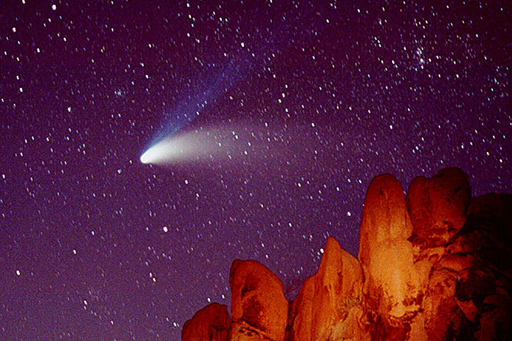4.2.8 A comet’s tail
A comet actually has two tails, one of dust and the other of plasma (charged particles). The tails point away from the Sun, as the particles are pushed away by the solar wind.
The dust tail can extend for millions of kilometres away from the nucleus; the accompanying plasma tail is usually more than ten times longer. The curved dust tail is made of particles shed from the cometary nucleus. Sunlight reflected off the dust gives the tail a yellowish colour. The grains are less than one micron across, and are mainly made from carbon-rich compounds layered on top of silicates.
In contrast, the bluer plasma tail is made up of ions and electrons. It is a long, straight tail, the structure of which is controlled by magnetic fields within the tail and the interaction of these fields with the solar wind magnetic field.
A comet can lose up to 1% of its mass each time it passes close to the Sun – in the case of Halley’s comet, that was around 100 tonnes per second.

